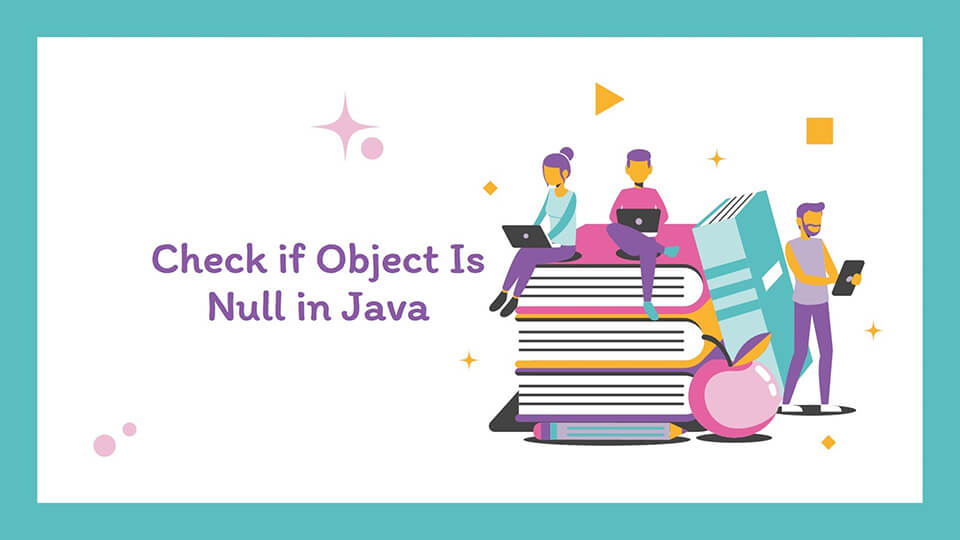Table of Contents
- 1. Introduction to the Problem Statement
- 2. Using the Simple == Operator
- 3. Using Objects Class in Java 8
- 4. Using Optional Class in Java 8
- 5. Using Ternary Operator
- 6. Using Object.requireNonNull()
- 7. Using Objects.requireNonNullElse()
- 8. Using Apache Commons Lang
- 9. Custom Utility Method
- 10. Using Java Streams
- 11. Conclusion
1. Introduction to the Problem Statement
In Java programming, handling null references is essential for preventing the dreaded NullPointerException. Suppose we have an object, MyObject. Our objective is to determine whether MyObject is null. The expected output is a boolean value indicating the null status of the object. This article explores several methods for checking nullity, considering their performance and applicability in different scenarios.
2. Using the Simple == Operator
The most basic and efficient way to check if an object is null is by using the == operator.
|
1 2 3 4 5 6 |
Object myObject = null; if (myObject == null) { // Handle null case } |
Explanation:
Object myObject = null;: This line declares a variable namedmyObjectof the typeObject, which is a class in Java. The variable is immediately initialized tonull, meaning it currently references nothing.if (myObject == null) { ... }: Thisifstatement checks whethermyObjectisnull. It uses the==operator to comparemyObjectwithnull.
It is highly efficient as it involves a simple reference comparison at the language level.
3. Using Objects Class in Java 8
Java 8 introduced Objects.isNull() for null checks, which is more readable and suitable for streams and lambda expressions.
|
1 2 3 4 5 6 7 8 |
import java.util.Objects; Object myObject = null; if (Objects.isNull(myObject)) { // Handle null case } |
Though slightly less efficient due to the method call overhead, it improves code readability.
4. Using Optional Class in Java 8
The Optional class, particularly Optional.ofNullable(), provides a functional-style approach to handling nulls.
|
1 2 3 4 5 6 7 8 |
import java.util.Optional; Object myObject = null; if (Optional.ofNullable(myObject).isEmpty()) { // Handle null case } |
This approach is less efficient because of the additional Optional object creation but offers a more modern, functional programming style.
5. Using Ternary Operator
A ternary operator can also be used for a compact null check.
|
1 2 3 4 5 6 |
Object myObject = null; if ((myObject == null) ? true : false) { // Handle null case } |
This approach is as efficient as the == operator and provides an inline alternative.
6. Using Object.requireNonNull()
|
1 2 3 4 5 6 7 8 9 10 |
import java.util.Objects; Object myObject = null; try { Objects.requireNonNull(myObject, "Object cannot be null"); } catch (NullPointerException e) { // Handle null object } |
NullPointerException if it is. It’s typically used for validating parameters.
7. Using Objects.requireNonNullElse()
This Java 9 method returns the first argument if it’s non-null; otherwise, it returns the second argument (a default value).
|
1 2 3 4 5 6 7 |
import java.util.Objects; Object myObject = null; Object defaultObject = new Object(); Object result = Objects.requireNonNullElse(myObject, defaultObject); |
8. Using Apache Commons Lang
For projects using Apache Commons Lang, ObjectUtils.isEmpty() can be a versatile option.
|
1 2 3 4 5 6 7 8 |
import org.apache.commons.lang3.ObjectUtils; Object myObject = null; if (ObjectUtils.isEmpty(myObject)) { // Handle null case } |
This method checks for both null and empty objects, offering more functionality but with a slight performance cost.
9. Custom Utility Method
Creating a custom utility method for null checks allows for tailored solutions specific to project needs.
|
1 2 3 4 5 6 7 8 9 10 |
Object myObject = null; if (isNull(myObject)) { // Handle null case } private static boolean isNull(Object obj) { return obj == null; } |
This method is similar in efficiency to the == operator and can be customized as needed.
10. Using Java Streams
For collections, Java Streams can be used to check if any of the elements are null.
|
1 2 3 4 5 6 7 |
import java.util.Arrays; import java.util.List; List<Object> objects = Arrays.asList(obj1, obj2, obj3); boolean hasNull = objects.stream().anyMatch(Objects::isNull); |
This method is suitable for checking nulls in collections and aligns with the functional programming paradigm in Java 8 and above.
11. Conclusion
There are several methods to check if an object is null in Java, each with its own use cases and performance implications. The choice of method should be based on the specific requirements of the project, considering factors like readability, performance, and the context in which the check is performed. The == operator is the most efficient for single objects, while utility methods from Java 8 and external libraries provide more readability and functionality at a slightly higher performance cost. For collections, the Java Streams API offers a functional approach to checking nulls.



